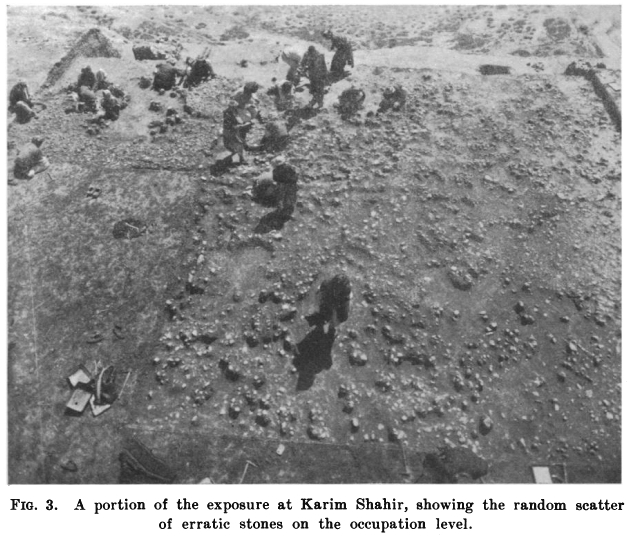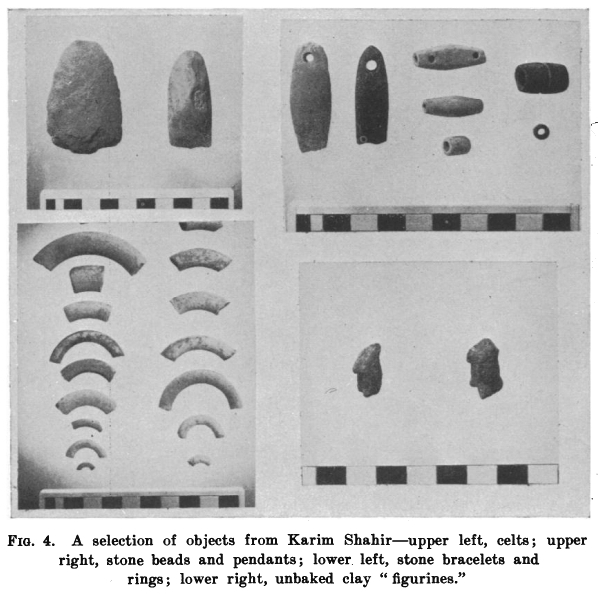|
Other Archaeological Sites / The Neolithic of the Levant (500 Page Book Online) Karim Shahir Culture ProofRead and Updated April 14th 2020 
From Cave to Village in Prehistoric Iraq by Robert Braidwood in
Karim Shahir was an open establishment of some two acres
in area located two kilometers up the wadi from Jarmo in the valley of
Chemchemal, Kirkuk liwa. The single occupation at Karim
Shahir was exposed in about 550 square metres of area (in eight different operations) in the period from March 14 to May 9 1951. Karim Shahir appears to have been occupied for a short duration by
a group of people in the stage loosely called [European term] “mesolithic” or EpiPalaeolithic. The site
indicated some sort of architectural activity in that the principal (and only well-defined) level was strewn with erratic stones but it was impossible to comprehend any sort of hut plan.
Hence the term village in the present state of understanding of Karim Shahir cannot properly be applied to the site. The small object assemblage was predominantly of chipped flint with a large component of microliths but
there were milling stone fragments (of both boulder-mortar and quern type), chipped celts with polished bits and ground stone rings, bracelets, beads and pendants. There was also a modest amount of ground bone and two rather amorphous unbaked clay figurines (figure 4). On typological grounds Karim Shahir is definitely older than the largely
pre-ceramic but otherwise well established village stage represented by
nearby Jarmo. In fact it seems likely that there may have been an intermediate stage lying between Jarmo and Karim Shahir in time, as certain surface materials gathered from other sites in the explorations
appear to indicate.
On typological grounds Karim Shahir might
seem somewhat antecedent to the Natufian assemblage of Palestine. On the other hand it is definitely an open-air establishment of some
size even if only of temporary duration. In this sense it foretells a new
order in human living about which Zarzi, Palegawra and even the
Natufian are still mute. There are open-air camp sites in Europe which
are doubtless older than Karim Shahir; the interest of Karim Shahir
centers on the approximate time and place where it makes its appearance. We believe it to be the earliest open site in the “nuclear area" of Western Asia and we suspect it presages a new development which
culminates in civilization.
(1) Prehistoric Archaeology Along the Zagros Flanks (1983)
(2) Prehistoric Investigations in Iraqi Kurdistan
|


